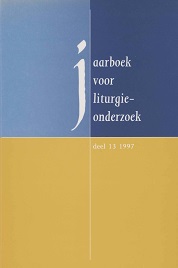Oude retabels in New Mexico. Spaanse invloeden op altaarkunst in de Verenigde Staten
Abstract
In the state of New Mexico, a unique group of interesting Spanish colonial retablos has been conserved. They show a number of particular features that provide these retablos with a very special position in the history of church furniture and iconography. Their structure follows a strict scheme in which painting and sculpture are integrated in a more or less naive style. In the autumn of 1996, we visited six mission churches in New Mexico, on the basis of A Sense of Mission. Historic Churches of the Southwest by photographer David Wakeley and the text of Thomas A. Drain (San Francisco 1994). In these churches, 21 retablos have been conserved. Many other retablos have disappeared, as side altars were eliminated. The retablos were manufactured in a relatively short period. In general, they date back to the late 18th and the early 19th century. A few of the artists, called santeros have been traced and documented by E. Boyd and M.C. Bol. As New Mexico was still a Spanish colony until 1848, the retablos show a strong influence from Spain through Mexico. In Spain, during the late Middle Ages a specific type of altar screens was developed, showing an architecture of its own, wherein a blend of painting and sculpture was applied. They consist of a number of storeys and niches, and they are fastened against the rear wall of the choir, so adjusted to the form of the apse. The Spanish took this particular form of retablo with them to their New World colonies like Mexico and Peru, where the tradition was interpreted in a different way, resulting in colonial styles like the ‘Barroco Mestizo’ in southern Mexico. In the state of New Mexico, the Spanish pattern is blended in a simplified form with a local taste of decoration. The same confluence of european and native american tradition is also reflected in the iconography. Besides universal and Spanish saints and protectors, a number of Mexican and local images is represented. This iconography might carry certain vestiges of syncretism.
Published
Issue
Section
Copyright (c) 1997 Jaarboek voor liturgie-onderzoek

This work is licensed under a Creative Commons Attribution 4.0 International License.


